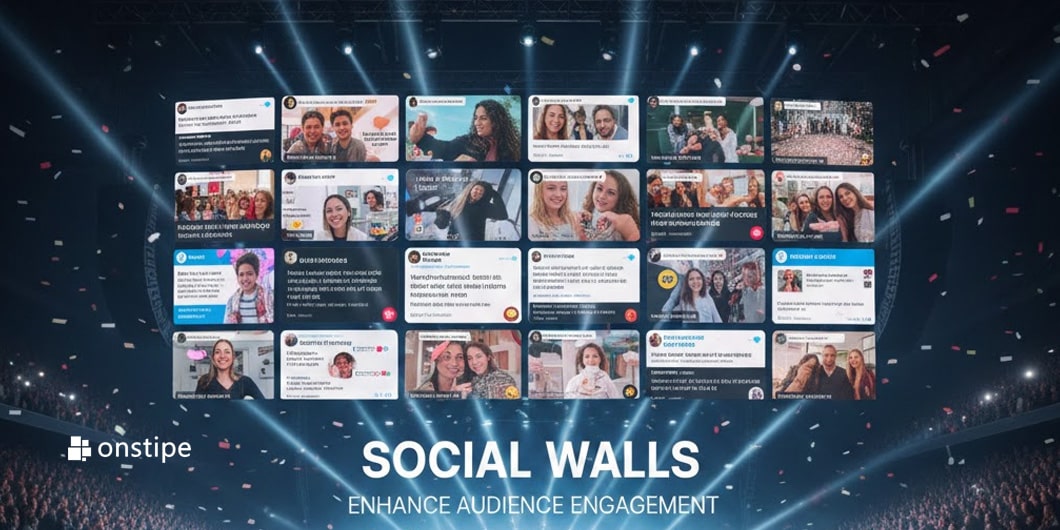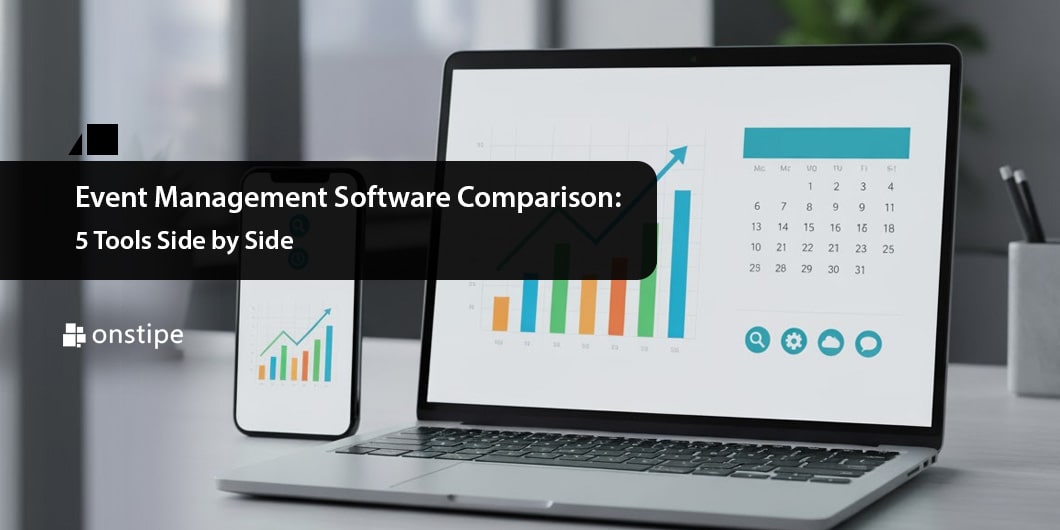Managing social media at scale has become a core operational task for brands, creators, and automation-driven marketing teams. The growing complexity of platform policies, account limits, and geo-sensitive content delivery makes technical tools like proxy servers increasingly important for safe and efficient workflows.
Recent data from Statista shows that more than 59.9% of the global online population will use social networks in 2025, while over 5.42 billion users interact with content daily and spend an average of 143 minutes per day on social platforms. This rising activity highlights why reliable, secure, and scalable proxy solutions now play a critical role in social media management and performance optimisation.
What Are Social Media Proxies?
Social media proxies are proxy servers that give each account its own stable IP identity so platforms cannot link unrelated profiles, while smoothing suspicious signals like rapid actions, location jumps, and automation. They rely on trusted, often rotating IP pools that mimic real user behaviour, helping brands run multi-region accounts with cleaner reputations and fewer platform restrictions.
How Proxies Maintain Identity
Proxies assign each account a separate IP identity, preventing platforms from grouping unrelated activities. This separation keeps account behaviour clean, structured, and internally consistent, while long-lived identities make both manual management and automated workflows easier to track and control over time.
Why Platforms Flag Accounts
Most social networks analyse repeated actions from one IP, sudden region changes, and high-frequency automation patterns. Proxies stabilise these signals, reducing the number of verification prompts and automated restrictions.
Early Anchor and Brand Mention
Running multiple accounts or automation flows depends on trusted IP pools that resemble real user traffic. Rotating proxies refresh identities safely while maintaining consistent sessions, and brands operating across several regions gain stable routing and clean IP reputations through mature proxy infrastructure.
Why Use Rotating Proxies for Social Media?
Rotating proxies keeps social media activity stable and low risk by separating accounts across different IPs, maintaining consistent logins, and protecting sessions. They also enable safer automation and geo-targeted research while isolating high-risk experiments from critical long-term profiles.
- Multi-account isolation: Separate IPs ensure that different brands or client accounts never appear linked to each other.
- Stable login behaviour: Consistent IP locations prevent suspicious login patterns that cause forced verification.
- Safer automation: Tools for scheduling, engagement, or scraping work reliably when tied to controlled identities.
- Geo-targeted visibility: Proxies reveal local feeds, competitor ads, and regional trends for multiple countries.
- Session protection: Persistent sessions reduce the risk of logout loops and repeated checkpoints.
- Workflow separation: High-risk experiments remain isolated from important long-term accounts.
In more advanced setups, rotating proxies from reliable service platforms keeps social profiles cleanly separated, preserves long-running sessions, and supports safe testing of geo-targeted campaigns without exposing core brand accounts to unnecessary risk.
How Do Proxies Prevent Blocks and Verification Prompts?
Proxies prevent blocks and verification prompts by breaking IP clusters, assigning each account its own route, and keeping logins tied to a stable region. They also dilute repetitive automation patterns through identity rotation and session isolation, so activity appears more organic to anti-abuse systems.
Reducing IP-Based Detection
The platforms group suspicious accounts by shared IPs. Proxies break these clusters by giving each account its own route. This prevents chain-reaction bans and protects agency portfolios from mass restrictions.
Maintaining Geo-Stability
Social platforms verify that account behaviour matches its historical location. Proxies allow teams to assign a fixed region to each account, reducing conflict between login locations and device history.
Preventing Behavioural Flags
Automation without proxies generates repetitive patterns, which anti-abuse engines detect quickly. Proxies dilute these signals through identity rotation and session isolation, making activity look more organic.
How To Set Up Multiple Accounts With Proxies?
Multiple accounts are set up with proxies by assigning each important profile a dedicated IP, keeping it in a separate browser profile, and locking it to a consistent region. New accounts start with a gentle warm-up, workflows stay segmented on different proxy identities, and long-term sticky sessions are used to reduce repeated logins and strengthen trust signals.
- Dedicated IP per account: Important accounts must operate on unique IPs to avoid platform-level linking.
- Separate browser profiles: Each profile stores its own cookies, tokens, and fingerprint to maintain coherence.
- Predictable region signals: Every account stays tied to one location to avoid security anomalies.
- Warm-up process: New accounts begin with low-intensity actions to establish a realistic activity baseline.
- Segmentation of workflows: Automation, research, and posting accounts must never share the same proxy identity.
- Long-term session persistence: Sticky sessions reduce repeated logins and improve platform trust signals.
Which Proxy Types Work Best for Social Media?
Residential and mobile proxies work best for social media because they look like real user traffic, keep identities stable, and achieve low block rates even on strict platforms. ISP proxies suit heavier posting and sessions, while fast datacenter proxies are better kept for low-risk, noncritical tasks.
Residential Proxies
Residential IPs come from household internet connections and are treated as “real user” traffic. They are ideal for long-term accounts and sensitive client work, especially where stable identities and low block rates matter more than raw speed.
Mobile Proxies
Mobile IPs originate from cellular networks. Because mobile signals rotate naturally and carry high trust, they perform exceptionally well on strict platforms like Instagram or TikTok, particularly for high-volume actions and intensive automation scenarios.
ISP and Datacenter Proxies
ISP proxies offer static high-quality IPs suitable for posting and session-heavy workflows. Datacenter proxies provide speed and scale, but should be reserved for low-risk tasks due to higher detectability.
How Do Proxies Support Automation and Scheduling?
Automation and scheduling with proxies stay safe when actions are drip-fed over time, run on separate identities, and varied to avoid rigid patterns. Limits on concurrency, behaviour-aligned IP rotation, and continuous monitoring of proxy health and platform responses keep workflows stable and under detection thresholds.
- Drip-fed timing: Actions spread across time intervals mimic natural human behaviour.
- Separate scraping identity: Scraping and posting must not share a proxy to avoid merging risk profiles.
- Randomised execution: Timing windows and action orders are varied to reduce pattern detection.
- Controlled concurrency: Limits on simultaneous actions prevent suspicious bursts of automated activity.
- Aligned rotation: IP rotation is timed to behavioural cycles to maintain continuity.
- Monitoring and adjustment: Proxy health, error rates, and platform responses are continuously analysed.
How Does Geo-Targeting Work With Proxies?
Geo-targeting with proxies works by routing traffic through local IPs, which lets teams see real regional trends, validate campaigns from a local perspective, and monitor competitors in target markets without exposing core accounts.
Local Trend Discovery
Proxies routed through specific countries show regional search results, discovery pages, and hashtag performance exactly as local users see them, so teams can map authentic local interest patterns. This is crucial for localised campaigns and market research.
Regional Campaign Validation
Teams can preview sponsored posts, promotional assets, and ad placements from the viewpoint of local audiences, checking layout, language, and targeting accuracy in real conditions. This helps ensure that creatives render correctly and comply with local norms, languages, and behaviours.
Competitive Intelligence
Proxies allow analysts to observe competitor activity, influencer collaborations, and location-restricted campaigns in any target country without affecting client accounts, while keeping monitoring routines stable over time. This supports deeper benchmarking and more precise strategic positioning.
How Do Proxies Affect Performance and Speed?
Proxies affect performance and speed through low latency, strong bandwidth, large and stable IP pools, high uptime, instant IP refresh, and predictable concurrency limits that keep automation and uploads running smoothly.
- Low latency: Fast response times prevent posting delays and automation timeouts.
- Large IP pools: Larger pools reduce repetition, improve rotation quality, and minimise the risk of shared identity.
- High uptime: Stable providers guarantee continuous access for schedulers and real-time tools.
- Strong bandwidth: High-speed throughput is necessary for video and image-heavy uploads.
- Instant IP refresh: Quick replacement avoids downtime for accounts using flagged or failing IPs.
- Predictable concurrency: Well-designed limits prevent overloads and blocked requests.
What Are the Most Common Mistakes to Avoid?
The most damaging mistakes are reusing IPs across multiple accounts, putting client profiles on cheap datacenter IPs, mixing risky automation with long-term accounts, breaking device/IP fingerprints, and ramping activity faster than platforms tolerate.
Reusing IPs for Multiple Accounts
Reusing the same IP for several profiles makes platforms link those accounts through a shared network identity. Once this pattern is detected, one flagged account can pull scrutiny or restrictions onto all others tied to that IP.
Using Datacenter IPs for Client Accounts
Running client or brand profiles on cheap datacenter IPs often looks like automation infrastructure rather than a real user connection. These IP ranges face more filters, which leads to faster limits, reduced reach, and more frequent security challenges.
Mixing Risk Profiles
High-risk automation tasks should never share IPs with long-term brand or client accounts. When everything runs on the same network identity, bans and flags from aggressive experiments can spill over and damage trusted profiles.
Ignoring Fingerprints
If browser, device, and IP signals do not match, platforms detect synthetic or stitched-together identities. Consistent fingerprints across sessions help accounts look human and stable, while mismatched setups trigger reviews and potential restrictions.
Scaling Too Aggressively
Increasing actions or account volumes too quickly pushes activity beyond what platforms expect from normal users. Even with proxies, sudden spikes in posting, following, or messaging will attract rate limits and block more requests.
Conclusion
Proxies form the foundation for safe, scalable, and region-accurate social media operations. With structured identity isolation, realistic behaviour, and controlled rotation, proxies reduce block rates, stabilise sessions, and support both automation and human workflows. For agencies managing multi-account portfolios, the combination of residential and rotating proxies is essential to maintain stability, compliance, and long-term account health.






